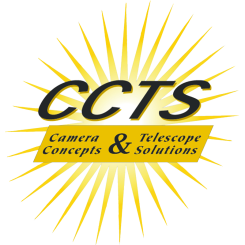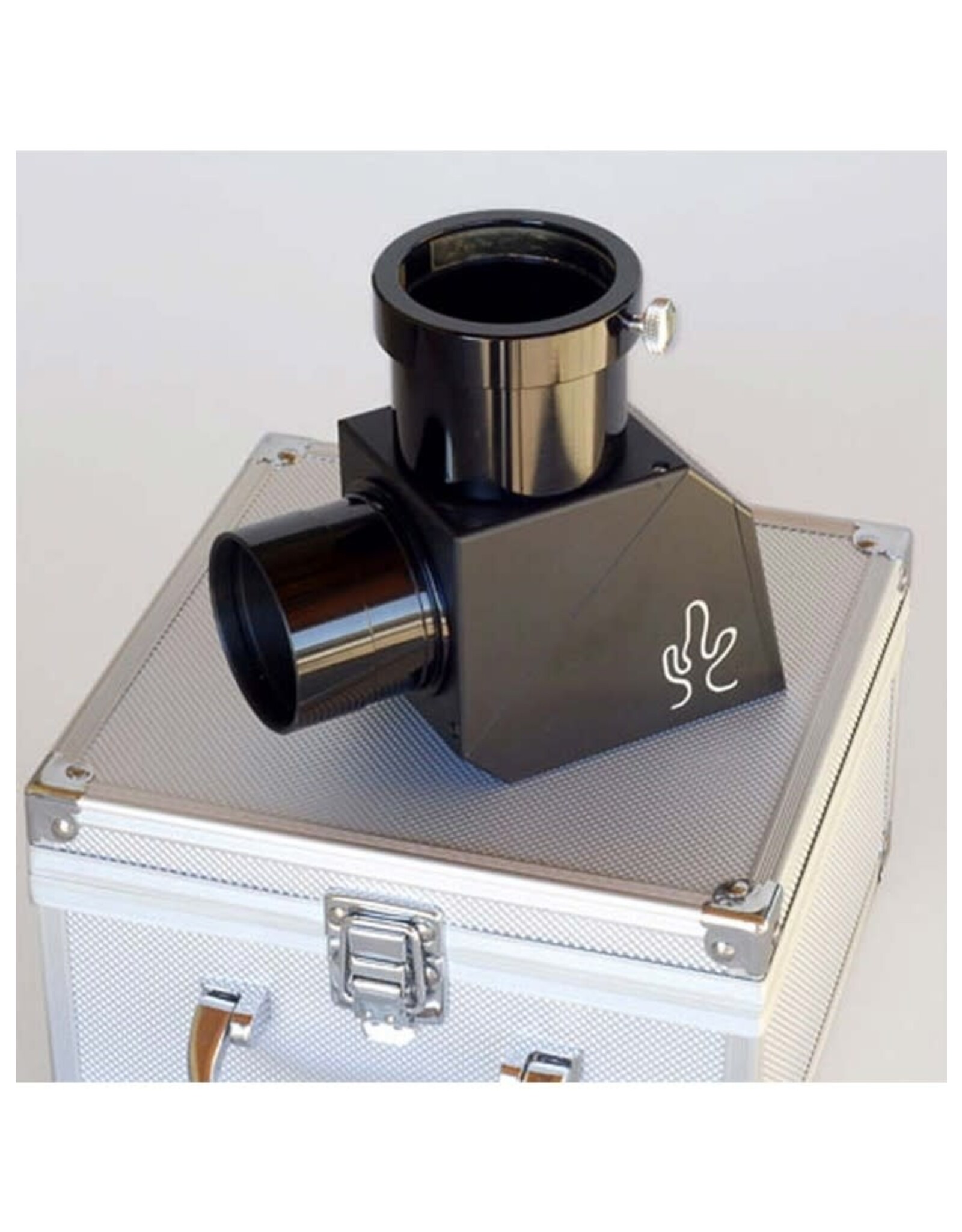Lunt White Light Solar Wedge 2 inch
| Article number: | LS2HW |
| Availability: | In stock |
Unlike glass and film objective solar filters, the Lunt Solar Wedge does not selectively filter any of the visual wavelengths, thereby providing a true all-wavelength white-light view without the image degradation from the scattered light inherent in standard objective filters. Visual and photographic images through the Solar Wedge are noticeably superior in resolution and contrast to even the finest and most expensive glass and film objective solar filters.
The Lunt Solar Wedge uses a precision-polished wedge prism in a 2" star diagonal housing to deflect 95% of the sunlight away from the visual and photographic light path. The original 200 year old Herschel wedge prism design simply dumped the unwanted 95% of the light out through the underside of the prism housing (where the user had to be careful not to place any object or body part into this output beam to avoid burns). Instead, the Lunt design directs this unwanted light to a circular grating within the wedge housing, which scatters the energy within the housing's blackened interior. Vents at the top and bottom of the housing allow cooling air to flow through the housing to dissipate the heat from this scattered light. The circular grating (the red circle seen at the rear of the prism housing) will get hot during use, and care should be taken not to touch it during use and until it has had time to cool down after observing.
The remaining 5% of the light used for observing and imaging is reduced to the desired brightness level by a precision-polished neutral density filter permanently built into the wedge housing. Since the neutral density filter is always in the system, there is no chance of accidentally viewing the unfiltered light as with some other Herschel wedges. Because the Lunt Solar Wedge produces polarized light, Lunt recommends that you thread an optional polarizing filter into the barrel of your eyepiece for visual use. Rotating the eyepiece with the polarizing filter installed lets you adjust the image brightness to a comfortable visual level with larger aperture refractors.
The amount of sunspot detail and surface granulation will surprise even the most experienced solar observer. Penumbra resolve into a staggering array of fine wispy details with a wide range of contrast never visible with an objective filter. The solar disc is set against a jet-black sky, like observing the full moon at night. With the Lunt Solar Wedge, it becomes obvious that the lack of detail and contrast experienced with objective white-light filters was not so much due to the atmospheric seeing as you had thought, but rather due to the short-comings of the objective filter itself. There is no resolution or contrast loss across the full field during full-disc solar imaging and the image will not break down during high magnification visual observing.
Similar in length to a 2" diagonal, the Lunt Solar Wedge requires more back-focus than a 1.25" accessory. Since most 2" eyepieces have their field stops well below the main eyepiece body, however, most telescopes with 2" focusers will have no problem providing enough back-focus (in-travel) to use the Solar Wedge. Some telescopes, such as many of the TeleVue refractors, provide limited back-focus and this 2" Solar Wedge may not be usable with all eyepieces. In such cases, the 1.25" Lunt Solar Wedge may be a better choice.
CAUTION: Because the full energy and heat of the sun enters the unfiltered telescope aperture with this system, the Lunt Solar Wedge should only be used with air-spaced refractor telescopes under 150mm in aperture. In addition, the refractor must not have a corrector lens or lenses at the back, such as found in a Petzval-type scope. Optical elements like refractor corrector lenses or the secondary mirror of a reflector telescope become very hot from the concentrated unfiltered solar energy and can be damaged. The internal baffles and components of catadioptric scopes (Schmidt-Cassegrains, Maksutov-Cassegrains, etc) can likewise be damaged. Choose your telescope with care to avoid damage to the scope when using a Solar Wedge.
Likewise, care and common sense should always be used whenever observing the Sun. An occasional break from observing, with the scope turned away from the Sun, will give you and your scope a chance to cool down. Equatorially mounted scopes that are tracking the Sun automatically should not be left unattended when using a Lunt Solar Wedge.


